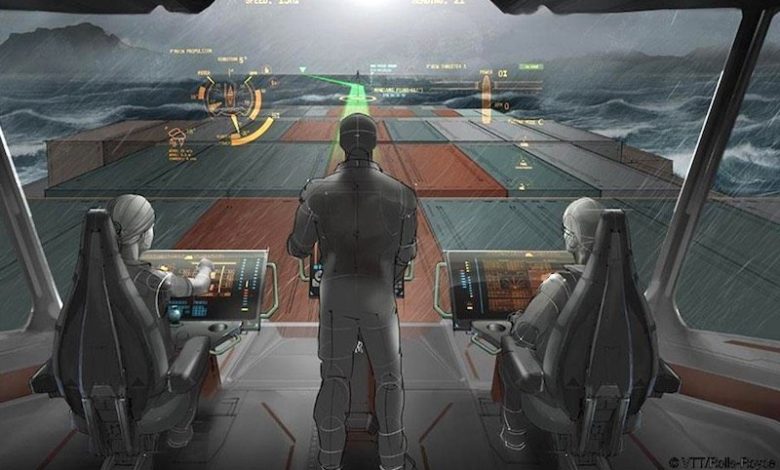Tide of digitalisation caught up in auto-pilot mode

It is telling, when following one of the recent conference sessions dedicated to container shipping, the moderator quipped how great it was that the whole session went through without even once mentioning word ‘digitalisation’ or its sibling ‘digitisation’. Seems the caravan moved on. The industry is on the lookout for another ‘blue ocean’ idea and it seems digitalisation has been put to rest.
How did we end up here? Maybe blockchain is to blame. The last 12 months were chockful of blockchain initiatives. The best-known brands in the industry jumped on the blockchain bandwagon starting with the joint announcement of collaboration between Maersk and IBM. Chief Digital Officers hired in the hurry by other carriers were called on to drop the process re-engineering initiatives and develop blockchain nirvanas. What followed was a cascade of equally curious announcements of pilots undertaken by other carriers, closely shadowed by blockchain-related pilots initiated by freight forwarders and ports. There we are – blockchain proof of concept and pilot projects became proof of the digitalisation prowess sweeping the shipping industry.
If you are in the industry and you are apprehensive of digitalisation embodied by all things blockchain, you are right. We have not resolved the basics yet, therefore digitalisation projects risk getting stuck in perpetual ‘pilot’ or ‘proof of concept’ mode. That is not very good news for shipping, as we are embarking on another round of capacity increases, dropping rates, increasing costs of capital, increasing costs of bunker fuel, and costs of fleet modifications to meet the emissions commitments recently agreed at the IMO.
The first requirement of successful digitalisation is the availability of complete digital data set of each supply chain participant. The industry has not created a clear and convincing incentive for all players to update their operations to the digital age in all aspects related to cargo shipments. The second problem is a lack of standard for generation, usage and transmission of cargo and trip-related data between all external parties participating in each shipping contract. The third problem is the lack of proper understanding of the concept of digitalisation within the shipping companies themselves.
The term ‘digitalisation’ always implied simplification of the core business processes, so that they can be resolved by machines, handled electronically, and producing only limited number of exceptions requiring human intervention. All carriers made decisions of maintaining their existing processes and automate them warts and all as they are. Those outdated processes throw out so many exceptions, that any use of machines to run the processes, plan the execution and decide using deep artificial intelligence is so limited that it doesn’t produce any significant outcomes vis-a-vis the investment required to implement these technologies.
Why have the shipping companies decided to leave the core processes untouched? Because those processes function today, their people are trained to execute those processes in familiar ways, and partners don’t see the benefit in adjusting their own core processes that feed or are being fed by ossified processes of the shipping companies. The chief digital officers hired along the way to question the ‘steady as she goes’ approaches have not attempted to raise those important issues and instead focused on the low hanging fruit like blockchain and e-commerce portals. Without the CDOs championing radical business process change to take advantage of all that digital innovation and strong support for that change from the executive suite guarantees the digitalisation ideas that could make a real difference to carriers’ business will remain in the ‘proof of concept’ mode for longer than expected.
Looking over my notes taken during the 2018 Singapore Maritime Week events, I realised that technology vendors are not keen on questioning the business model assumptions of the industry. They are happy to let the industry define the need for a technology to address this or that silo-related problem and quickly jump into the implementation mode. Outcomes, or lack of them, from those projects are seen as the sole responsibility of the shipping companies.
Soren Skou, CEO of Maersk, proposed during the Singapore Maritime Lecture that digitalisation will change the industry’s culture. As any change management practitioner can attest, changing culture is not possible by simply deploying new technology. I cannot recall any success story of culture changing as a result of technological innovation. In many cases, industry culture embraced digitalisation or automation, but it did not change as a result of technological innovations. Only when the cultural change was internalised first, new technologies were called for to support it. That is something that CEOs of all shipping companies should understand. The dearth of real results from digitalisation projects undertaken might be directly related to industry’s resistance to rapidly moving from ‘piloting’ to ‘using’. While no one can stem the tide, the maritime shipping industry is simply plodding along and hoping that no one else will be able to eat their lunch. That’s a shame.
